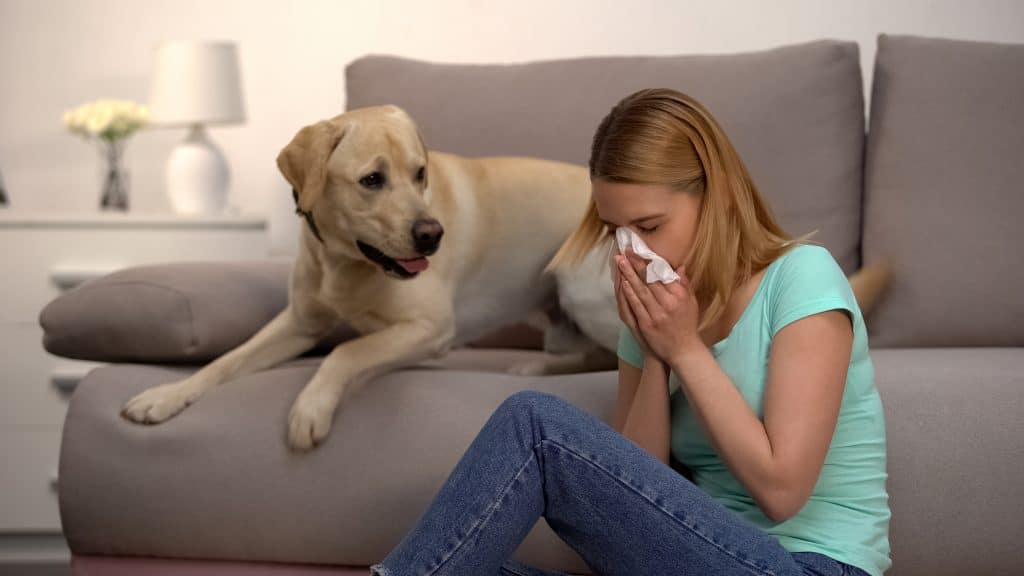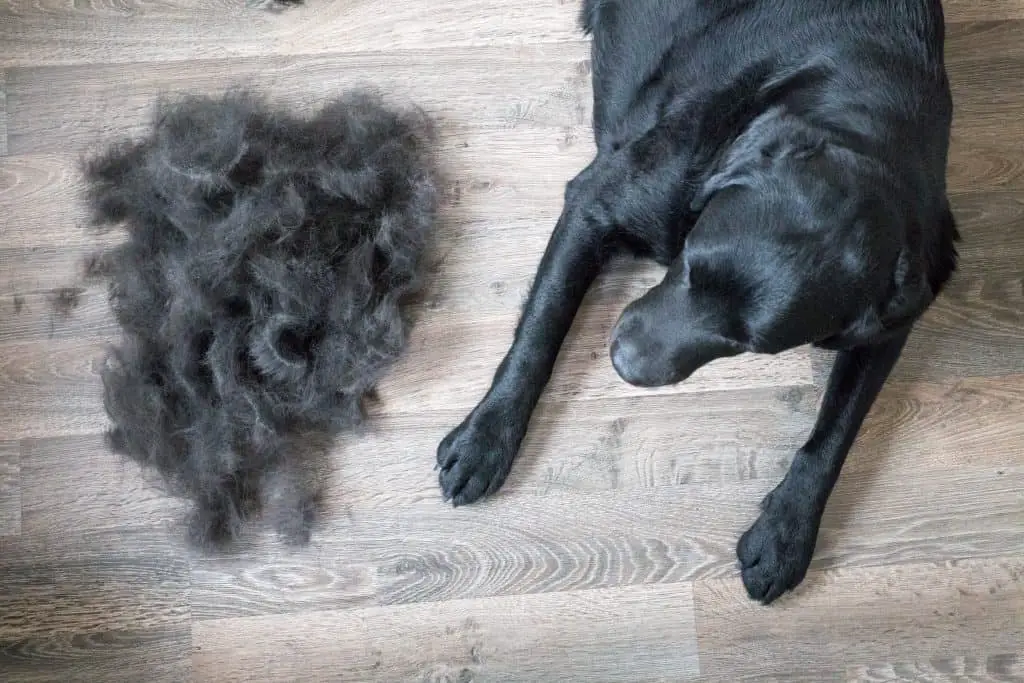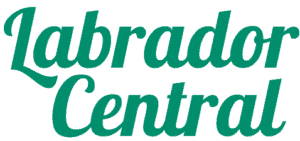
Short answer: NO. Labrador retrievers are the most popular dog breed in America and it’s easy to see why. Labradors are cute and have great character. If you like dogs, you like Labradors. Unfortunately, Labs are known for shedding a lot of hair, that’s bad news for dog lovers that suffer from pet allergies or asthma.
As many as 3 out of 10 people in America suffer from allergic reactions to pets. This means that there are a lot of people that would love to have a Labrador (or any other dog) in their lives but are afraid of having to deal with the constant sneezing, stuffy nose, itching, and all the other symptoms of pet allergies. It’s also known that dogs can trigger asthma attacks.
A common question for people that are not familiar with Labrador Retrievers is: Are black or chocolate Labs hypoallergenic? Unfortunately no. Labradors of all three colors shed in the same amount. So the color of the Lab makes no difference when it comes to pet allergies. With this in mind, we investigated to find out if it’s possible to live with a Labrador when you have pet allergies.

What are hypoallergenic dogs?
You probably heard about hypoallergenic dogs. These are dog breeds that supposedly do not produce allergens and therefore, are compatible with people that have dog allergies. But, the truth is that there is no such thing as a 100% hypoallergenic dog.
Hypoallergenic dog breeds produce very little shedding and less dander compared with other dog breeds. Therefore, are more suitable for people with pet allergies. Allergic people still need to take precautions if living with one of these dogs.
So, can you be allergic to labradors? If you have a Labrador Retriever or are familiar with the breed, you will know that Labs shed a lot and produce a lot of dander as well. Unfortunately, this means that Labs are bad for allergies.
The American Kennel Club (AKC), considers these dog breeds to be hypoallergenic:
- Afghan Hound
- American Hairless Terrier
- Bedlington Terrier
- Coton de Tulear
- Giant Schnauzer
- Kerry Blue Terrier
- Lagotto Romagnolo
- Bichon Frise
- Chinese Crested
- Irish Water Spaniel
- Maltese
- Miniature Schnauzer
- Soft Coated Wheaten Terrier
- Spanish Water Dog
- Poodle
- Portuguese Water Dog
- Standard Schnauzer
- Peruvian Inca Orchid (Hairless)
- Xoloitzcuintli
Is there a hypoallergenic Lab mix
A Labrador mix dog that doesn’t shed and produces a lot of dander sounds like the perfect solution for people that love Labradors but don’t want to deal with the adverse effects of pet allergies. Some dog experts believe that such a dog exists and is called the “Labradoodle” this dog is a crossbreed between a Labrador Retriever and a Poodle. Labradoodles are becoming very popular in the USA. Although, this breed is not recognized by any major Kennel Club in the world. Related Post: Are Labradoodles Hypoallergenic?

What causes dog allergies?
People with pet allergies have an oversensitive immune system that reacts to a certain animal protein. This protein is harmless and is found in the dog’s urine, saliva, and dander. This last one is what causes the most problems for allergic dog owners.
Dog’s dander attaches to the fur, and when the dog sheds its fur and the dead hairs start to float around your house, the dander goes along for the ride, getting everywhere. This is why allergic people will have adverse reactions when they live with a dog even if they don’t touch or even get near the animal.
Dog dander is dead dog skin that forms into flakes and eventually falls off the dog’s body. Sometimes the dander particles are so small that they can only be seen with a microscope. This is why dog dander is a problem for those who suffer from dog allergies, it gets everywhere and it’s very difficult to clean. Click here to find out more about LABRADOR RETRIEVER SHEDDING
Can I have a Labrador if I have allergies?
It may be the case that you want a Labrador in your home, but you or a family member suffers from pet allergies. So you are asking yourself: Is it possible to have a Labrador in these circumstances?
If you ask your doctor how to deal with your allergies, you will be told not to have a dog, and if you already have one, almost every allergist will advise you to give your dog away. It might sound cruel, but doctors do it because they are trying to eliminate dog allergens from your home.
Of course, this is very difficult for a dog lover, just thinking of giving away your dog is heartbreaking. So, if you are willing to live with a dog despite allergies, you can take precautions to minimize the allergens in your house.
The first thing you must do is tell your doctor your intention to get a dog or keep the one you have. This is important, your doctor must know if you have a dog at home.
Here is some useful information via Web MD
How to get rid of dog allergies
Some allergy experts recommend that dog owners keep their dogs outside. Labradors can be outside dogs, although Labs prefer to be inside with humans. But what if you can’t leave your dog outside or live in an apartment? In this case, you must put a lot of effort into minimizing the amount of dog hair and dander in your house, keep reading to find out how. Related post: Are Labrador Retrievers Outside Dogs?

Get rid of dog hair in your house
The first thing is to try reducing the amount of dead dog hair and the associated dander in your house. This means grooming your Labrador daily. Managing shedding helps to get rid of most of the dead hair that otherwise would end up around your house. You also need to bathe your Lab regularly, using a special anti-allergen dog shampoo can be a big help. Related post: An Introduction To Labrador Grooming
Keeping your house clean is also very important. This means vacuuming your house regularly. It’s a good idea to invest in a vacuum cleaner designed to clean pet hair and dander. Don’t forget to clean and sanitize all the surfaces in your house. Try to avoid putting heavy carpets and drapes in your home, these trap dander and are difficult to clean.
Your dog’s bed also traps a lot of hair and dander, so make sure to wash your Lab’s bed periodically. This will be easy if you buy a dog bed with a removable and machine-washable cover.
You can also purchase air purifiers with special filters for dander and other allergens. This will help to catch the dog dander floating around your house. Click here to find the best vacuums and cleaning tools that will make getting rid of dog hair much easier.
RELATED POST: LABRADOR RETRIEVER SHEDDING PROBLEMS AND SOLUTIONS
Give your Labrador boundaries
Dog discipline is important. Don’t let your dog climb on your bed and furniture. This way you will reduce the dead hair and dander deposits in your house. You also need to stop your dog from entering your bedroom or the bedroom of a family member that suffers from allergies. This way, you will reduce exposure to the dog’s allergens.
Labradors are very social animals, they love to be next to their humans all the time. Your Lab will climb into bed with you if you let it. So, setting boundaries will require a lot of discipline and some training.
Living with a Labrador is challenging for those with pet allergies, we hope that this post will help you create a living environment in which you and your dog will live together comfortably.
If you want to find the best pet insurance for your labrador, click here


